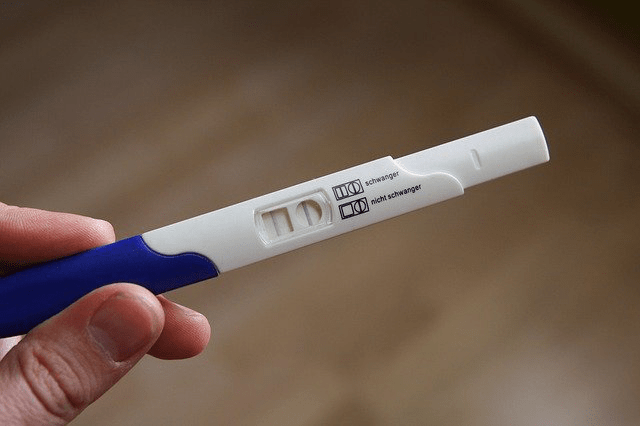
How to Track your Fertile Days and Ovulation?
Fertile days are the days during your menstrual cycle. A woman is more likely to be able to conceive during these days then rest.
When you are striving to conceive, timing is what matters the most—having intercourse before ovulation and on the peak fertility days increases of your chances of conceiving.
But what are fertile days?
It is a small window of time around ovulation—days during which an egg is released from the ovaries and moves down the fallopian tube.
Why keep track of fertile days?
Even if you are not planning for an immediate pregnancy, it is good to chart your cycles because the longer you keep a record, the more accurate you will be to determine the fertile days. Periods vary from month to month, and women to women, so keeping track for several months consecutively gives a better idea.
Once you have an understanding about your ovulation cycle, get down to business! One thing that is most important to discuss here is, if you have intercourse after you’ve ovulated, it may be too late!
The healthcare practitioners advise to have sex every day or every other day, five days before ovulation and continue so the day after the ovulation day. These are referred to as women’s fertile days.
Sperm can live as long as three to five days inside a woman’s body. However, an egg’s life span is only 12 to 24 hours; therefore, intercourse before ovulation, on the day of ovulation and the day after ovulation-it maximises the chances of conceiving.
How to find when you are ovulating?

The best way is keeping track of several aspects of your cycle. The timing of your periods is most important to determine the ovulation. The prime reason is that menstrual cycles can vary so much—from every month to every woman. The points are discussed below to give a bit more clarity. Keep track of your periods’ duration. the necessary information that you require is
Is your menstrual cycle regular?
How many days gap occurs in between your consecutive periods? what you have to do is
- Mark the day you get your period as day one on the calendar. Count the number of days until your next period.
- It would help if you did this for a couple of months to get a more accurate measure of the length of your cycle.
- An average menstrual cycle in women is of 28 days.
- But in many women, regular cycles can range from 23 to 35 days in length. In these cases, you have to find your ovulation day and fertile days by using some techniques, methods and ovulation kits.
If your cycles are regular
You can determine when you ovulate by doing some simple calculations. In an average menstrual cycle, ovulation occurs 14 days before the next menstrual period arrives. So by subtracting 14 days from the length of your cycle, you’ll get an idea of when you ovulate.
- Women of 28-day cycle ovulate on 28-14=14th day
- A woman with a 30-days cycle ovulates around 16th day: 30-14=16th day
- A woman with a regular 26-day cycle, about 12th day: 26-14=12th day
- For women of shorter or longer periods following signs should be observed strictly to find your fertile days.
Signs and Methods to determine Ovulation
There are many ways to find your ovulation and fertile days. Try to increase your odds of timing intercourse or insemination.
1. Cervical mucus
The vaginal secretion that helps sperm to travel up into the uterus. The mucus changes its appearance from dry to sticky, creamy, wet, and lately to the consistency of egg whites. Before ovulation, the mucus becomes more transparent, slippery and lucid. After ovulation, the mucus slowly changes in appearance and becomes more thicky and egg whitish. Cervical mucus is one of the best indications of ovulation.
You can determine the cervical mucus by seeing it on your underwear. Or, placing a finger inside your vagina and see how the mucus feels.
2. Basal body temperature
The average waking body temperatures before ovulation is about 97-97.5 degrees Fahrenheit, but after ovulation, it rises to 97.6-98.6 degrees Fahrenheit.
Use a basal thermometer to check your temperature in your mouth, vagina or rectum, but stay consistent. Make it sure-once a vaginal thermometer, remains a vaginal thermometer. Note your temperature before you get out of bed in the morning, or after getting at least three hours of sleep. It is better to note the temperature at the same time each day. You will find it difficult to track the temperature in the start. But by charting for several months, you’ll begin to understand your pattern.
3. Cervical position
At the time of ovulation, the cervix will become higher, softer and more open. With clean hands, insert a finger into your vagina and feel for your cervix for findings. Ask your doctor or midwife about this at your next visit.
4. Spotting between two periods
Sometimes, the egg releases from the follicle that holds it, resulting in a small amount of bleeding as vaginal spotting. But it is not shared. Still, if you notice it, consider it a sign of arrival your fertile window.
5. Pain or cramping
About 35% of women experience anxiety when they ovulate (a phenomenon is known as mittelschmerz). The pain feels like cramps in the lower abdomen or sharp pain on one side.
If the pain is a bit worse, then consult the doctor as it can be due to other underlying health problems.
6. Breast tenderness
breast tenderness is another sign as hormones associated with ovulation can sometimes cause your breasts to feel tender. It is also an early sign of pregnancy in Some women.
7. Fatigue, Nausea and Headaches
Hormones also trigger the classic sign of pregnancy during ovulation, and you may suffer from these symptoms during ovulation.
8. Increased sex drive

Many women have increased sex drive as they approach ovulation. They are more sexually fired up.
Ovulation predictor kits
These kits are a prevalent method of determining the day of your ovulation. The kits function by detecting the levels of Luteinizing hormone (LH) which rises before ovulation. You will urinate on the strips just like pregnancy detecting kits every day starting a few days before your expected ovulation.
When the results are positive, make sure to have sex the same day and for the next few days. The kits are readily available over the counter at pharmacies.
Follicular monitoring
If it is difficult for you to track your ovulation by the above methods, you can talk to your health provider for other options that can help. Blood hormones testing and ultrasound are other scientific methods to know about the exact ovulation day.
How much sex or insemination is too much when trying to conceive?
“If your partner or sperm donor has a high sperm count, then it better to have sex every day in your fertile window. If the sperm count is low, having sex on alternate days is an excellent option to boost the sperm count in the ejaculation. Sperm is healthiest when ejaculation happens every two to three days, so it is better not to wait for too many days between intercourse.
What if I am not getting pregnant?
If you’re under 35 and are trying for 12 months, or 35 or older than 35 and are trying for six months, then it’s time to see the doctor. A proper check-up for a fertility evaluation is recommendable at this stage. It is better to have a complete check up to determine the overall reproductive health. Talk to your gynaecologist about the situation, and see for necessary fertility tests and treatments.





